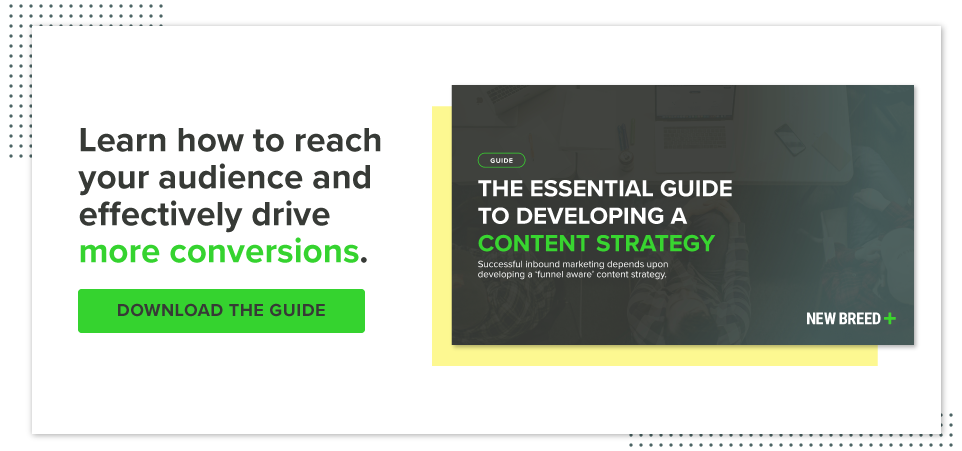
Developing a webinar is an exciting process — if you have the right guidelines, human resources and content. Figuring out what you need is often the most difficult aspect of webinar development and promotion; once you know, you can make the right moves to ensure everything is buttoned up.
Industry experts reveal that the most successful webinars are three things: educational, clearly communicated, and of course, entertaining. So, what assets are necessary for your webinar campaign to be successful, both before launch and during promotion?
Let's start with a checklist of assets you need to gather or develop before campaign launch.
Webinar Tips and Development Assets
Several items on this list are seemingly self-explanatory, but having a checklist on hand will help ensure you haven't overlooked a single thing.
A project plan
What is your webinar about? Do you have the topic, title, speakers, targeted persona and promotion plan identified? This should take place at least 6–8 weeks before your event.
Confirmation
Make sure you have confirmation from all necessary contributors before developing your webinar further. Also, be sure to get confirmation from your speakers that they are committed to being part of the event. This should happen 5–6 weeks before your event.
A defined audience
Your target audience should be based on your webinar topic and the persona-specific pain points it addresses.The webinar should provide valuable content for your audience, so choose your target audience accordingly. This should happen 5–6 weeks before your webinar.
A presentation deck
Put together all your talking points into a clear presentation to be used during the webinar. Keep slides simple so attendees focus on what you’re saying, rather than struggling to read along or deciphering complex charts. Here are 10 tips to creating better slide decks from the presentation experts at TED.
Webinar promotional copy
Your webinar will need an attention grabbing headline. Choose something that is clear and concise, and not too inaccessible. You want readers to immediately understand what the webinar is about. Put together a list of key takeaways that attendees can expect to get from attending your webinar. This should happen 4–5 weeks before the webinar.
A lead form
You can either use a form you already have set up, or create one specific to your webinar. Either way, make sure that the leads that fill out your form are going to be tagged appropriately for follow-up. Keep form fields to a minimum and only ask for information you have deemed important enough to use. This should happen 3–4 weeks before your webinar.
A registration page
Using the copy you’ve already developed, put together a webinar registration page that features your webinar title, date and time, presenters, key takeaways, and prominently placed registration form. This should happen 3–4 weeks before the webinar.
Email copy
At a minimum, you’ll need copy for an initial email invite, a reminder email, a thank you email, a sorry we missed you email, and a webinar recording email. These emails can all use the same template, but they’ll need different variations of copy for each specific audience. This should happen 3–4 weeks before your webinar, so you can be ready to send your first one when it's time.
Webinar rehearsal
It’s always a good idea to run through your presentation so that the presenters are comfortable with the webinar software and the deck. This should happen 3–4 days before your webinar.
Webinar Promotion Checklist
Send email invite
The initial email invite should have an attention grabbing subject line, and clearly articulate to readers what the webinar is about and what they can expect to learn by attending. Be sure to include a clear call to action, leading people to the registration page. Send this invite 2–3 weeks before the webinar.
Send follow-up email to non-openers
A few days after your initial send, you can send a follow-up email to people who didn’t open the first email. Be sure to change the subject line. You may also want to consider changing the "from" name and using personalization to increase your open rate percentage. This should happen 4–5 days after your initial invite.
Last chance registration email
Many registrations come in a few days before your event, so consider sending a last chance registration email to all non-registrants on your target list 2–3 days before your event.
Webinar reminder #1
Send a reminder to all registrants 24 hours before your event, in case they forgot or didn’t put it on their calendar.
Webinar reminder #2
Send a reminder to all registrants 2–3 hours before your event, so they have the login link handy as soon as the event starts.
Thank you email to attendees
Post-webinar, be sure to send a thank you to all attendees. Include the link to the presentation and on-demand version of the webinar.
Sorry we missed you email to non-attendees
Similarly, send a post-webinar follow up to registrants who didn’t attend. Include the link to the on-demand version of the webinar so they can watch it later.
Webinar recording promo
Now that you have this awesome on-demand webinar recording, promote it to the people in your target audience who didn’t register. Likewise, promote the recording via your social channels as well, to increase your viewership.
If you use this checklist to develop a world-class webinar, or have a checklist of your own, we want to hear from you. Let us know what was successful, what wasn't, and what webinar tips you'd add to the list in a comment!




